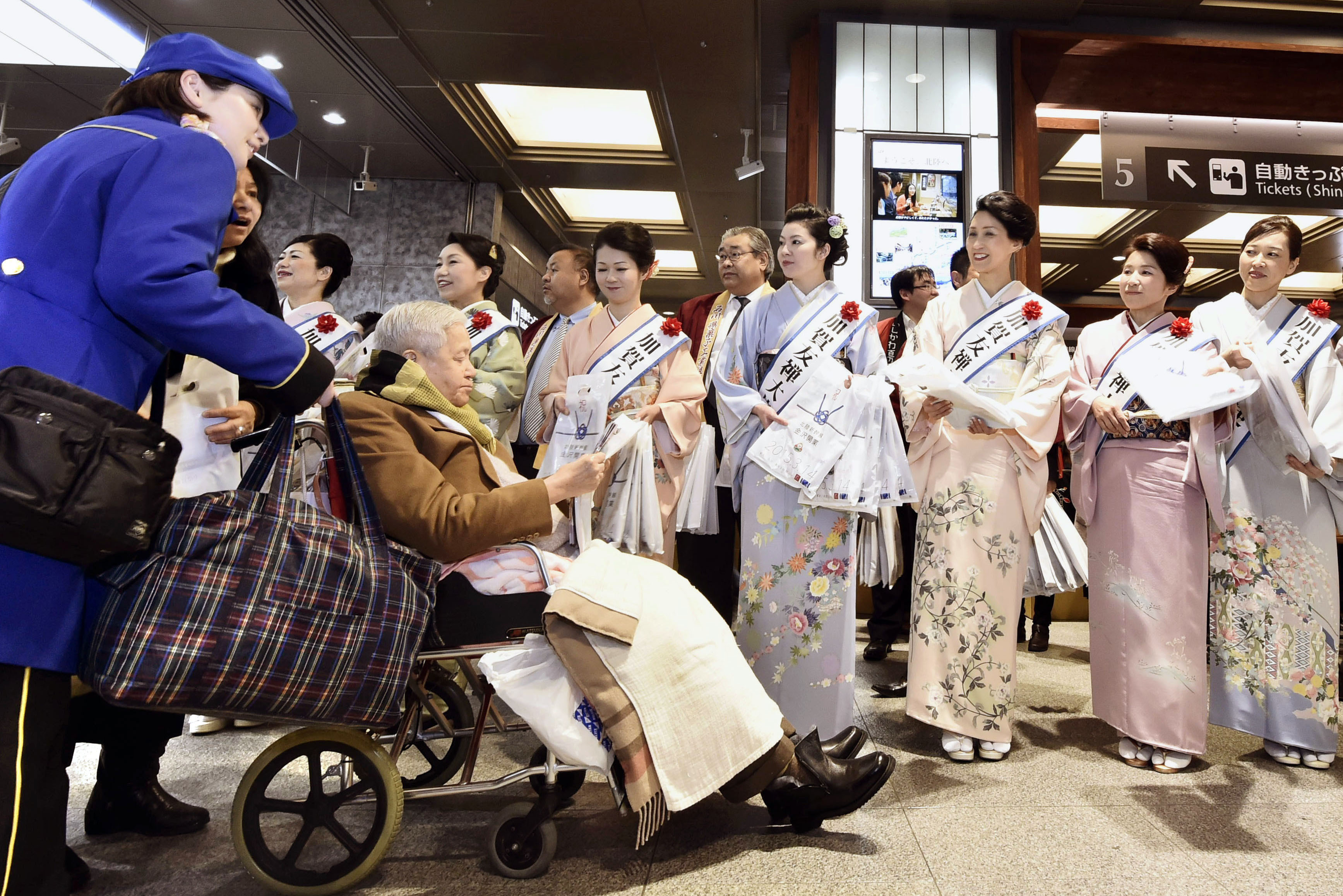A friend who often goes to Ishikawa Prefecture for family reasons mentioned on Facebook last week that he took the overnight bus from Tokyo and arrived at Kanazawa Station at about the same time of the Hokuriku Shinkansen's inaugural run. When I asked why he hadn't taken the new train, he said it was impossible to get tickets, which is understandable considering so many people wanted to be on the first one. However, he also thinks the fare is too high and resents JR West and JR East, which jointly operate the line, for not offering the same kinds of discounts that other shinkansen offer for round trips and regular patrons.
This wasn't the first complaint I'd heard about the new bullet train, but you have to dig to find a discouraging word. Mainstream media have been effusive in their coverage. NHK ran a special report several weeks ago on the new line, focusing on the sightseeing features of Kanazawa, the current terminal, and businesses that are moving operations to the Hokuriku area because it will now be less than 2½ hours from Tokyo. These segments were rebroadcast numerous times on various NHK news programs during the week leading up to the train's launch on March 14. Though the story is newsworthy, the reporting is pure public relations, something NHK usually avoids since it is a public broadcaster.
Shinkansen are not 100 percent commercial enterprises, even if the JR companies that run them are nominally private firms. With the exception of JR Tokai's maglev, the central government shoulders two-thirds of the cost of building new shinkansen lines, with the other third covered by the local governments whose bailiwicks the new lines go through. To use them, JR pays rent that goes toward settling the debt. So while in the long run the lines belong to the private sector, their conception and execution are centrally planned by the public sector, which means they are public-works projects.



